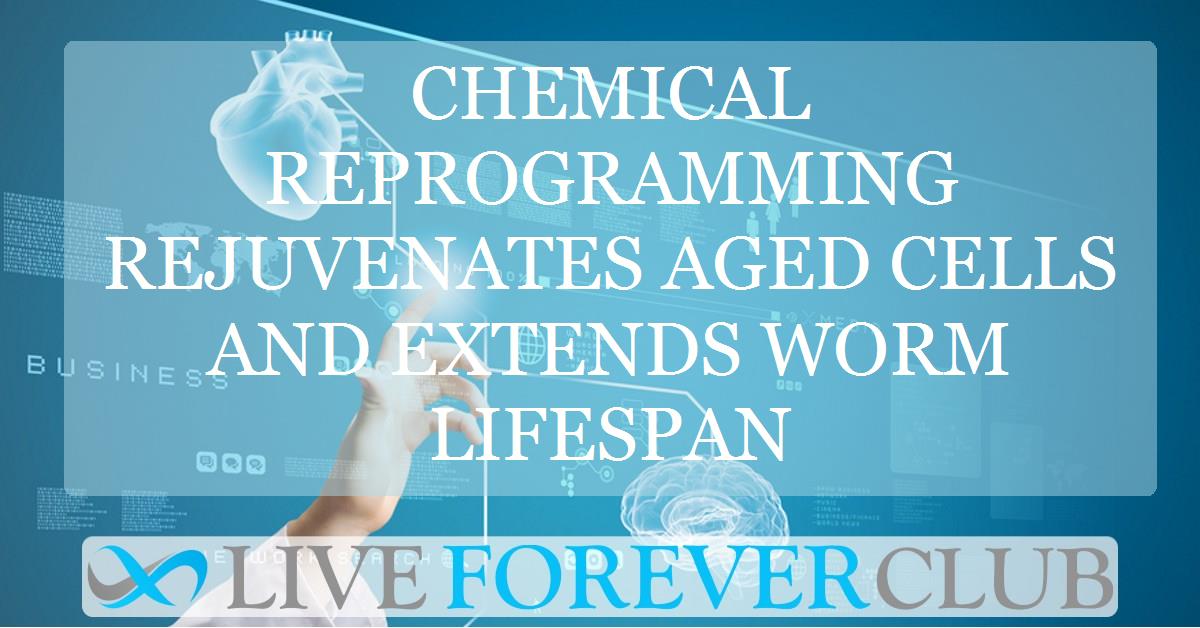Imagine if we could turn back the clock on our cells. Not just cover up wrinkles or slow ageing, but actually make our cells younger from the inside out. For years, scientists have chased this dream, and new research is bringing us closer than ever.
A recent study led by Lucas Schoenfeldt and team explored an exciting new method called chemical reprogramming. This approach aims to reverse cellular ageing without risky gene manipulation. Instead, it uses simple chemicals to nudge cells into a more youthful state.
The Big Problem: Why We Age
Ageing isn’t just about grey hair or stiff joints. Deep inside, our cells start to break down. DNA gets damaged, important chemical tags (epigenetic marks) disappear, and cells stop dividing properly.
These changes cause diseases like heart problems, Alzheimer’s, and cancer. Today, we can slow ageing slightly with diet, exercise, and some drugs. But actually reversing it? That has stayed out of reach.
The Power of Reprogramming
In 2006, scientists discovered that certain factors (OSKM — Oct4, Sox2, Klf4, and c-Myc) could turn adult cells back into stem cells. These are called Yamanaka factors, and they basically erase a cell’s memory, making it "young" again.
But there’s a huge problem. In living animals, full reprogramming can cause cells to lose their identity and form tumors. Imagine turning a skin cell into a stem cell inside your body — dangerous!
That’s why researchers started exploring partial reprogramming. This involves exposing cells to reprogramming factors for a short time. The goal? Rejuvenate cells without turning them into stem cells.
Chemicals Instead of Genes
Gene-based methods can be risky and hard to control. So, scientists wondered: what if we use chemicals instead?
A cocktail of small molecules had already been shown to create stem cells from mouse cells. These chemicals can change the way cells work without inserting new genes.
However, no one knew if this chemical approach could fight ageing directly. That’s where Schoenfeldt and colleagues stepped in.
The First Test: Human Skin Cells
The team took skin cells (fibroblasts) from older people. These cells often show signs of ageing: DNA damage, loss of protective epigenetic markers, and a build-up of harmful molecules like reactive oxygen species (ROS).
They treated the cells with a seven-chemical mix for six days. This mix included known reprogramming chemicals like CHIR99021, Forskolin, and Valproic acid.
After treatment, the cells looked much healthier. DNA damage markers dropped, epigenetic markers returned, and harmful genes linked to ageing and stress were dialled down.
Not Perfect: The Downsides
The first chemical mix (called 7c) wasn’t perfect. It reduced cell proliferation and surprisingly increased ROS levels. That’s a problem because too many ROS can damage cells further.
Also, some chemicals in the mix harmed cell growth. So, while cells looked younger in some ways, they weren’t completely healthy.
This showed that the cocktail needed refining before it could be useful.
Enter the Optimized Mix: 2c
The researchers decided to simplify. They removed the chemicals that harmed cell growth, leaving only two: Repsox and TCP.
Repsox blocks a pathway that usually prevents cells from changing state, and TCP affects gene regulation by blocking a certain enzyme.
They called this new, simpler combination 2c. When they used it, the results were impressive.
Improved Ageing Markers
With 2c treatment, DNA damage markers decreased, and protective epigenetic tags returned. Cells showed less evidence of senescence, a state where cells stop dividing and start producing harmful signals.
Even better, 2c did not hamper cell growth as much as 7c did. ROS levels dropped instead of rising, suggesting a healthier cellular environment.
These changes suggest that 2c could help cells stay functional and youthful for longer.
Testing on Other Cells
To ensure this wasn’t a one-off result, they tried 2c on keratinocytes, the main cells in our skin's outer layer. The results matched: less DNA damage, restored protective markers, and reduced senescence.
This hinted that the treatment might work in different tissues, making it a promising candidate for future therapies.
Effects Beyond the Lab: Worm Lifespan
Testing in cells is one thing, but would it work in a whole organism? The team turned to a tiny worm called C. elegans, a favourite in ageing research because it has a short lifespan and shares many biological pathways with humans.
When treated with 2c, the worms lived much longer — their median lifespan jumped from 19 to 27 days, a huge 42% increase.
Even better, the worms stayed healthier. Their movement stayed strong, reproductive capacity lasted longer, and they resisted stress better.
Signs of Better Health
The treated worms showed fewer age-related tumors and maintained body size better as they aged. They also handled heat and oxidative stress much better than untreated worms.
This suggests that 2c doesn’t just make them live longer; it improves their healthspan, the time they stay healthy and active.
Why This Matters
We know that longer life without health isn’t a good deal. No one wants to live extra years stuck in bed or suffering from chronic diseases.
The real goal is to extend healthspan. The 2c treatment did just that in worms and rejuvenated human cells in the lab.
If similar effects happen in humans someday, this could transform how we fight age-related diseases.
Advantages Over Genetic Methods
One big advantage of using chemicals is safety. Chemicals don’t permanently change DNA. They can be given in controlled doses and stopped anytime.
In contrast, genetic methods carry risks of uncontrolled cell changes and cancer.
Moreover, chemicals are easier to deliver into the body compared to genes.
The Next Steps
Of course, we’re not ready to put 2c in a pill yet. More work is needed to confirm it works in mammals, including mice and eventually humans.
Scientists also need to understand exactly how these chemicals create these rejuvenating effects. What genes do they turn on or off? Which pathways matter most?
Answering these questions will help fine-tune the treatment and make it safer.
Learning From Nature
Interestingly, these findings connect to a bigger idea: ageing is not a fixed fate.
In development, cells erase age-related changes to become new, young cells. The fact that we can mimic this erasure process suggests that ageing is, at least partly, reversible.
By copying these natural processes carefully, we might one day reset our own cellular clocks.
A Broader Impact
While this research focused on skin cells and worms, the implications go further.
If chemical reprogramming can work in different tissues, it might help fix damage from heart disease, liver problems, or even nerve injuries.
Imagine using a simple chemical treatment to rejuvenate worn-out organs without surgery or risky transplants.
Keeping Identity
A major concern with reprogramming is that cells might forget who they are. You don’t want a skin cell suddenly thinking it’s a liver cell!
The study found that with 2c, cells kept their identity while regaining youthful features. That’s critical for safety and function.
Hope, But With Caution
This is a thrilling step forward, but it’s not a magic bullet yet.
The gap between worm studies and human therapy is huge. Many treatments that work in worms fail in humans.
Yet, every journey starts with a step, and this work is a big one towards real age-reversal therapies.
Final Thoughts
The dream of reversing ageing is moving from science fiction to science. Chemical reprogramming offers a fresh, potentially safer way to refresh our cells.
Schoenfeldt and his team showed that using just two chemicals, we can reverse many ageing signs in cells and extend lifespan in worms.
This opens the door to a future where we don’t just fight ageing — we truly turn it back.
The study is published in the journal EMBO Molecular Medicine. It was led by Lucas Schoenfeldt from University of Lausanne.





